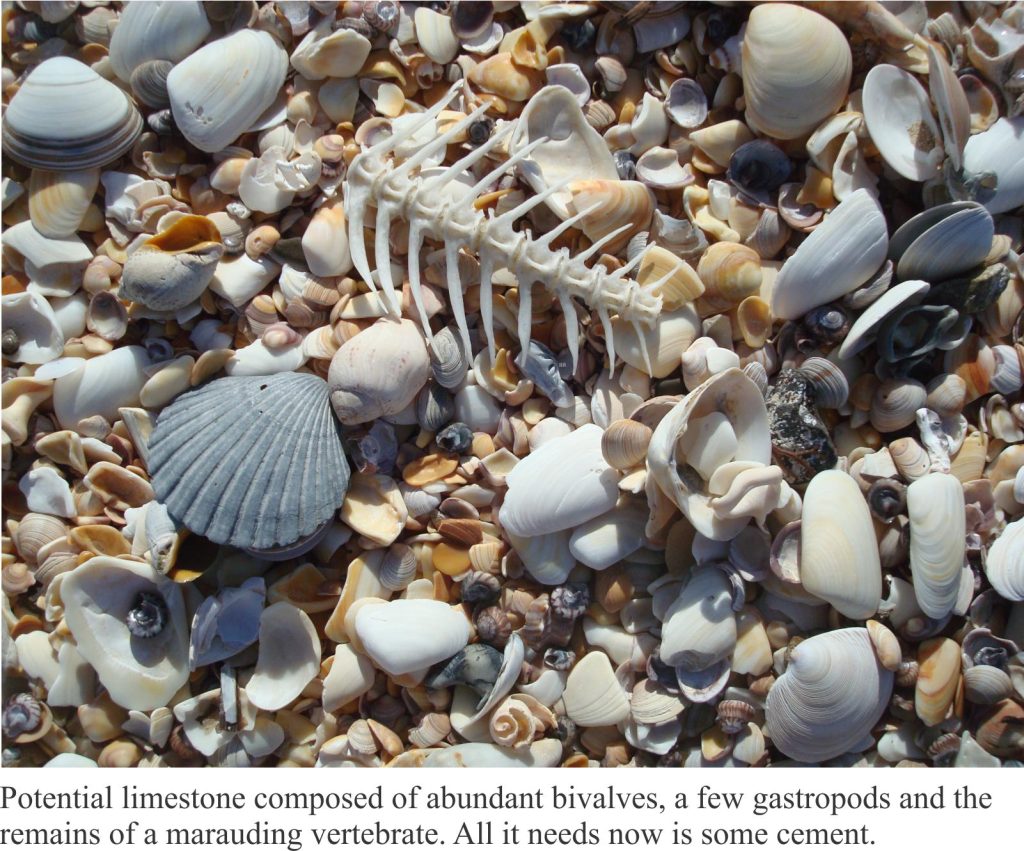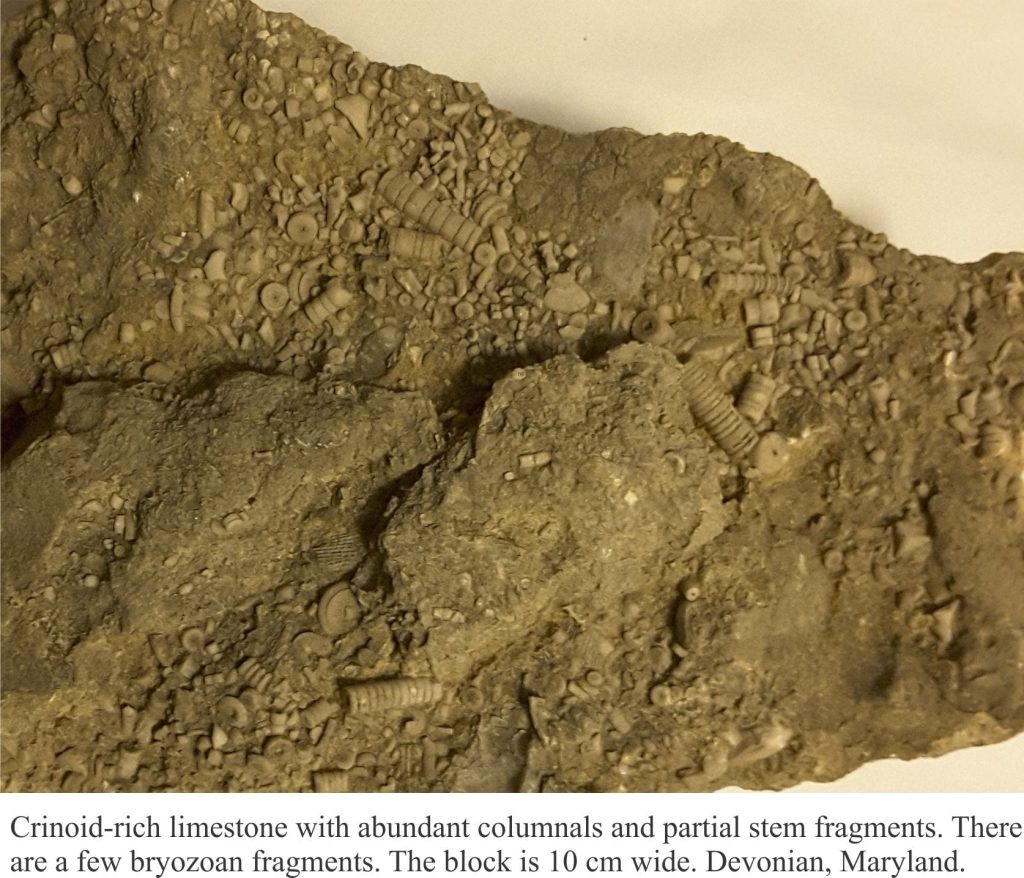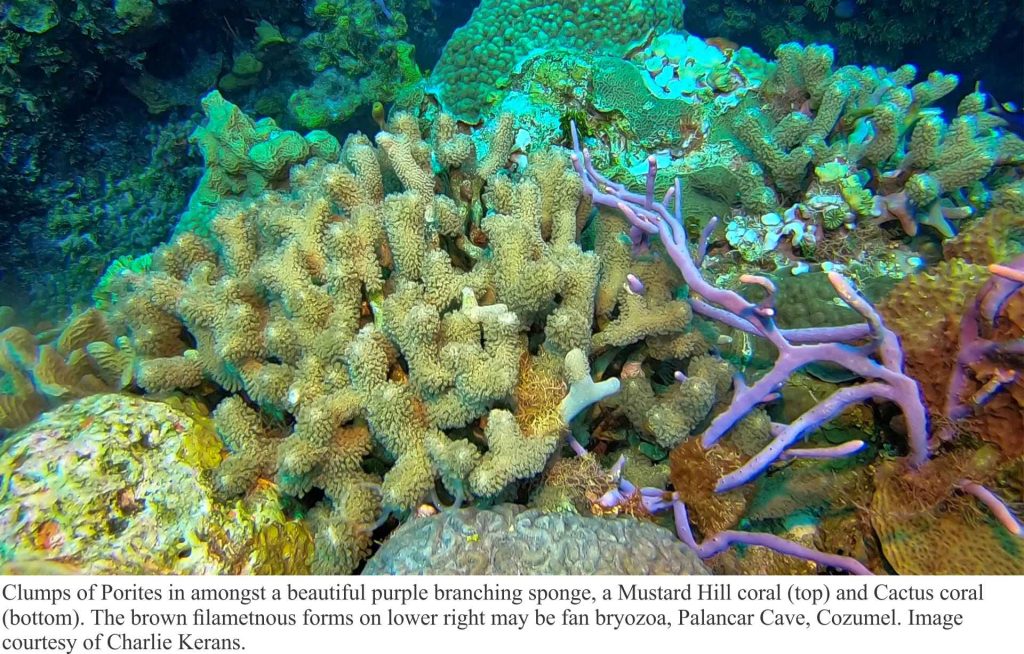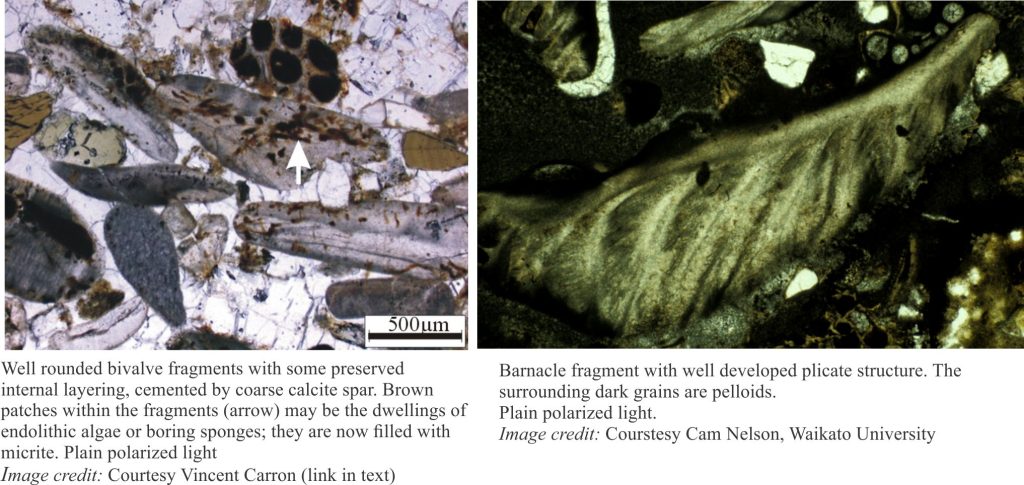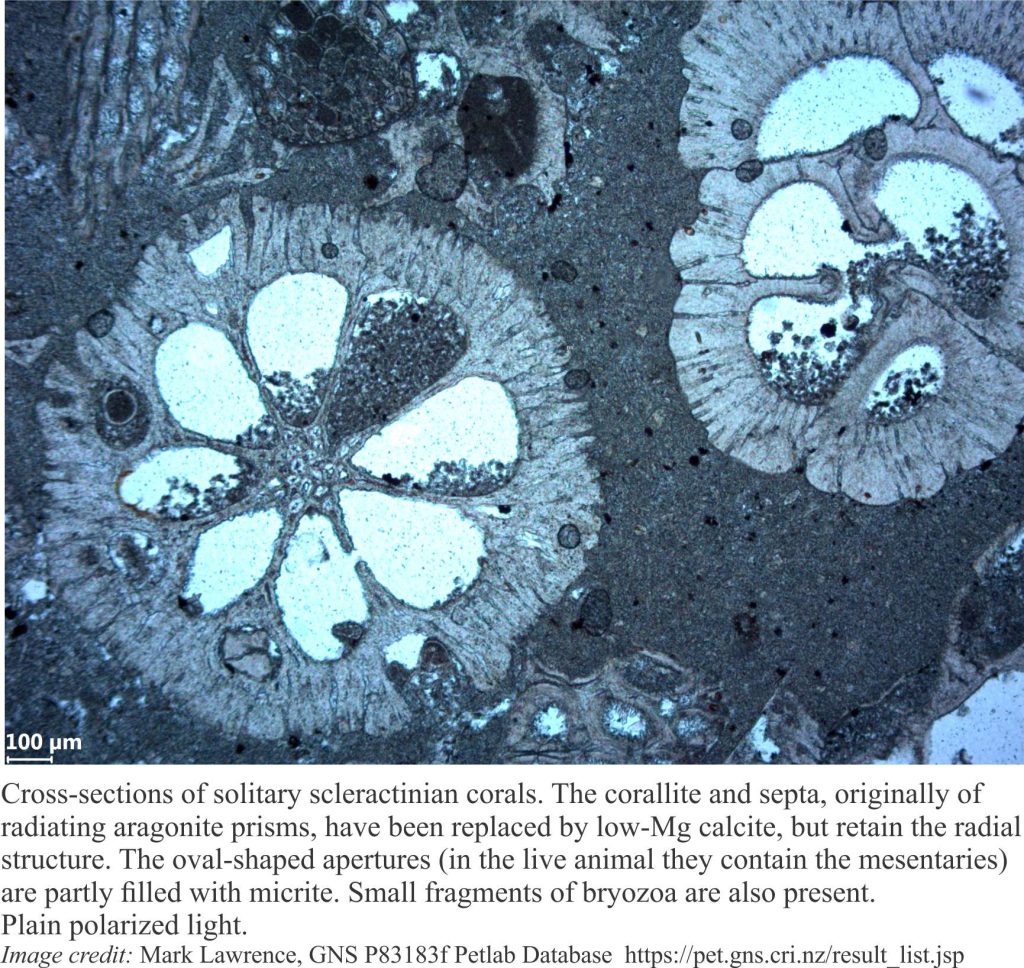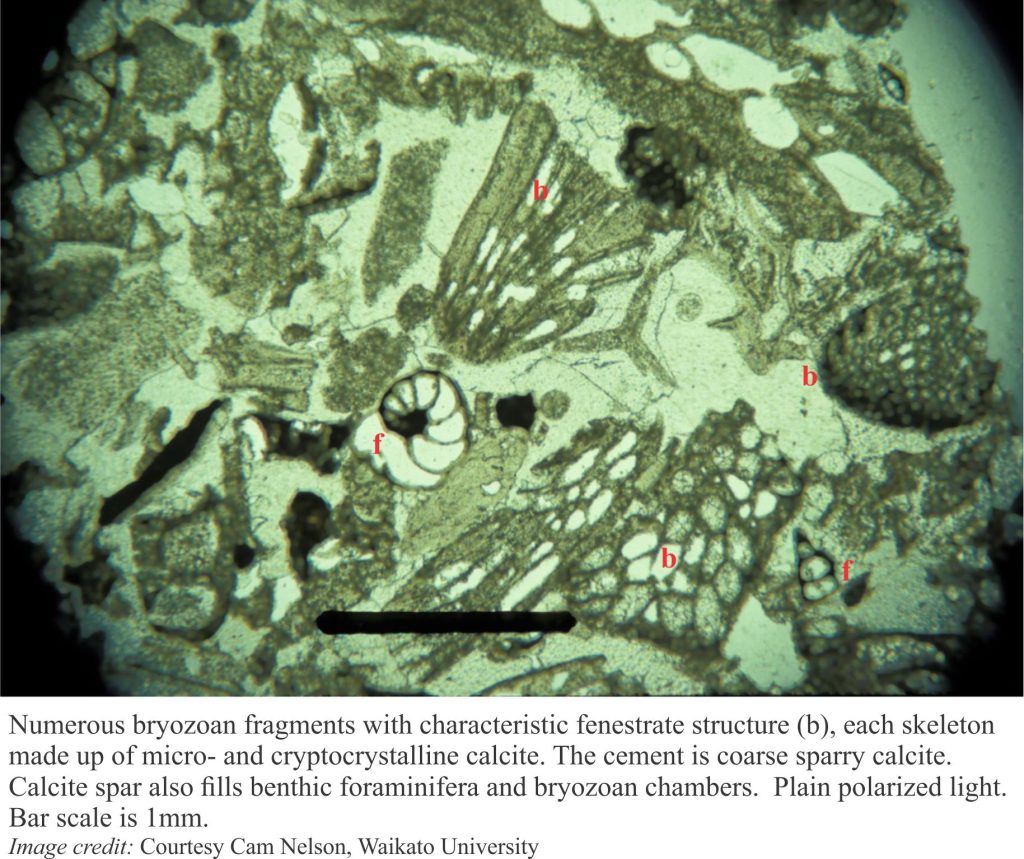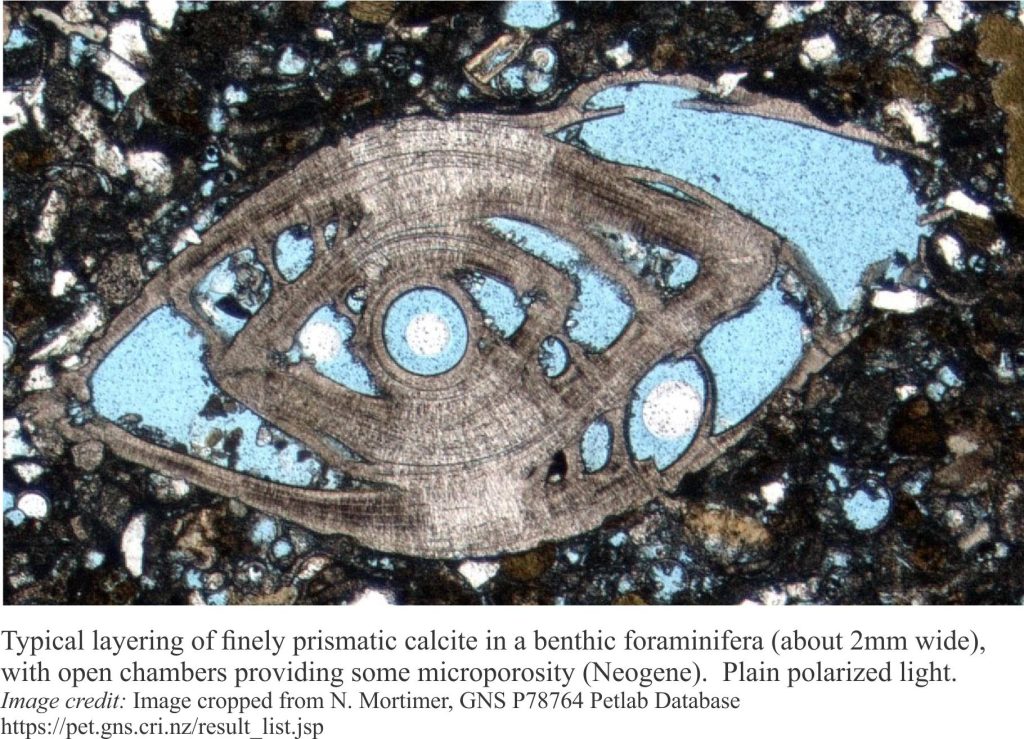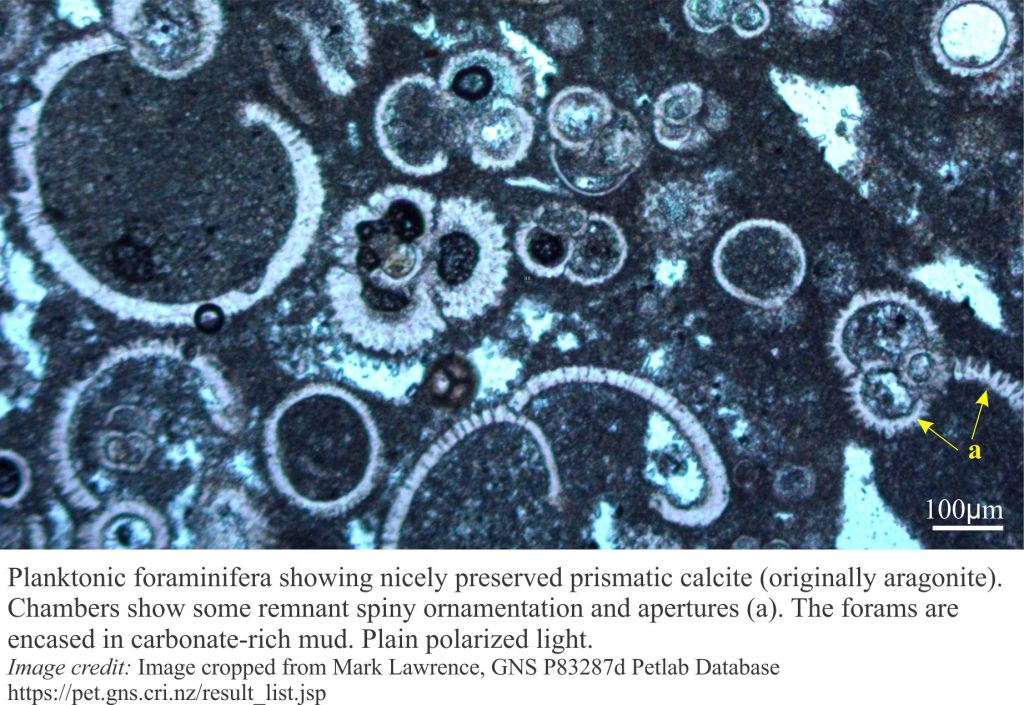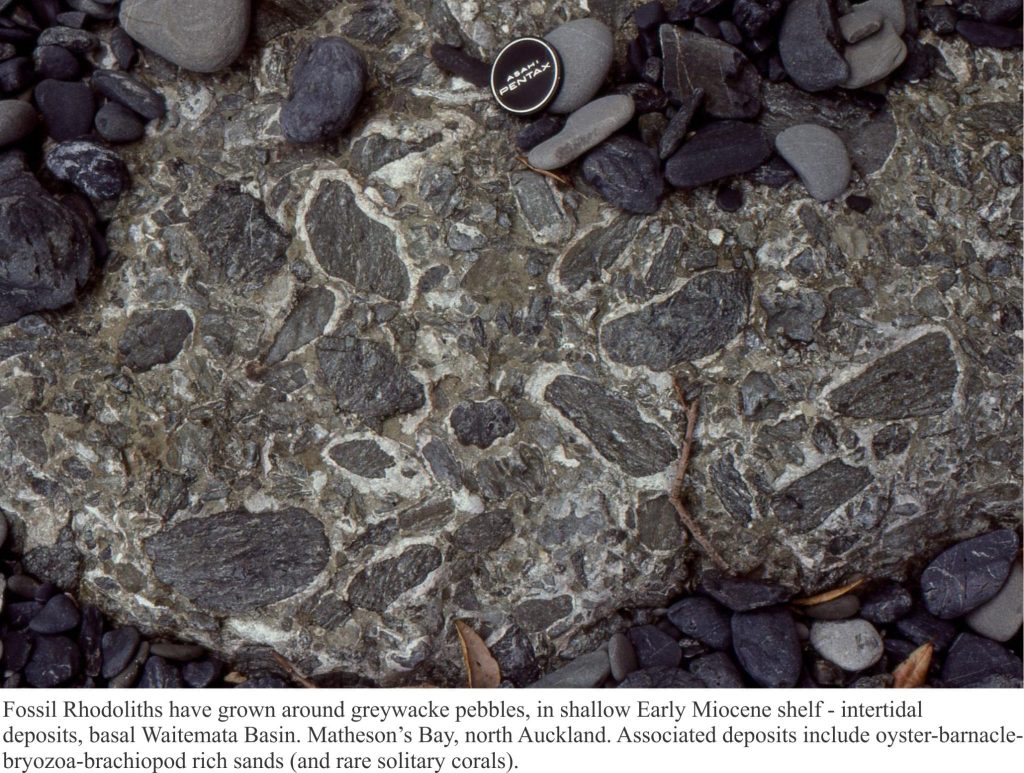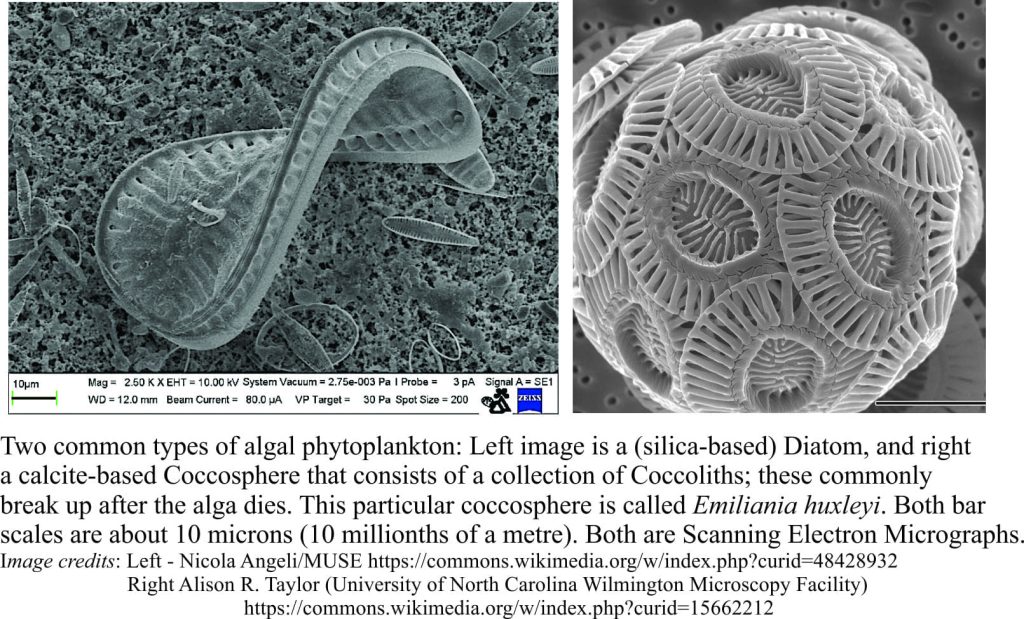A post in the How to… series on carbonate mineralogy
Like sandstone, limestones are made up of framework components, variable amounts of matrix, and cements. Frameworks, or allochems, consist of skeletal fragments, non-skeletal clasts like ooids, pellets, and lime-mud rip-ups (micrite) that have all been subjected to some degree of transport (sometimes very little). Unlike sandstone, the lithification of allochems begins at the sea floor and continues during burial; the products of lithification involve the transformation of calcium carbonate polymorphs, and precipitation of cements (calcite, aragonite, dolomite), sometimes referred to as orthochems. Skeletal and non-skeletal grains plus cement are all used to describe and classify limestones.
The skeletal components of limestone are largely sourced from invertebrates, a wonderfully diverse group of animals that are domicile on the sea floor, within its sediment, and in the water column above. Invertebrate skeletal material may survive intact, or as fragments resulting from mechanical breakdown, bioerosion, or the end product of a vertebrate’s dinner. The preservation potential of all this material is high.
Corals, the foundations of reef complexes, are a dominant component of tropical limestones (reef top, fore-reef, back-reef and lagoon). During the Paleozoic this niche was also occupied by Stromatoporids, and during much of the Precambrian by stromatolites buildups, or reefs. Echinoids, various molluscs (particularly bivalves and gastropods), brachiopods, benthic foraminifera and sponges are common co-inhabitants. Calcareous algae as encrusting forms and the lime-mud producers Halimeda and Penicillus are important contributors to the carbonate factory.
Cool and temperate-water limestones lack coral reefs although solitary corals do occur. Instead, these limestones form from accumulations of bivalves, gastropods, echinoids, forams, and associated attached or encrusting benthic critters like barnacles, bryozoans and calcareous algae; Halimeda, Penicillus and other lime-mud producers do not inhabit cool-temperate seas. Although not reef-like, some species such as oysters commonly construct significant buildups; the Oligocene Te Kuiti Group in New Zealand has some excellent examples.
All these critters, phytoplankton and algae inhabit the photic zone, the uppermost layer in lakes and seas where photosynthesis can take place. The depth to which light penetrates is highly dependent on water turbidity. In clear water 50% of light is absorbed at one metre depth and 90% at 20m. There is little significant light below 200m depth. The photic zone is of critical importance for algae photosynthesis – algae are a primary food source for many invertebrates or join with them in symbiotic relationships.
In tropical-subtropical environs, sea-floor cements include calcite (high- and low-Mg varieties) and aragonite. Sea floor cementation of temperate water carbonates does occur but usually with calcite alone.
Some examples of the important limestone skeletal components are shown below. However, it is important to recognize the limitations when identifying individual fossil grains in hand specimen and with an optical microscope:
- The fragments you are viewing will probably be at some random, unknown orientation.
- Depending on orientation, the internal structural organization of crystals may be similar across a range of species.
- The original skeletal fabrics may be disrupted and even completely obliterated by recrystallization or mineral replacement. Dissolution of skeletal grains also produces moldic porosity.
- In general, your identification will probably get no further than class level – if you can distinguish bivalve from gastropod, even bivalve from brachiopod, you are doing well.
Before launching into the unknown, it is worthwhile spending time with thin section – grain mounts of known invertebrates, microfossils and calcareous algae. These will avail you of their attributes and help demonstrate some of the problems noted above.
Microscopic skeletal structures
Skeletal structure in most invertebrates (shells, corallites, tests) consists of microscopic and submicroscopic calcite and aragonite crystal aggregates organized in layers. The orientation and composition of crystallites is highly variable among phyla, classes and even genera. Molluscs commonly have two or three layers of aragonite or alternating calcite-aragonite layers. Nacreous layers that commonly show beautiful coloration on shell inner surfaces (common in bivalves, gastropods and ammonoids), are always aragonitic. Here the aragonite crystals are stacked plates or prismatic clusters, or both. Other layer types in molluscs might include foliated calcite crystals (where the extinction figure sweeps across the skeletal grain), and various combinations of herringbone-like growths of microscopic needle crystals.
Brachiopod shells generally have two layers – modern genera are mostly low Mg calcite. Modern echinoderms tests consist of interlocking plates and spines; each plate and spine is a single high Mg calcite crystal. Echinoid plates and spines are highly porous and under the microscope appear like large ‘poikilitic’ calcite crystals. Calcite cements tend to grow as syntaxial overgrowths on these crystals (i.e. the cements are in optical continuity with the host crystal).
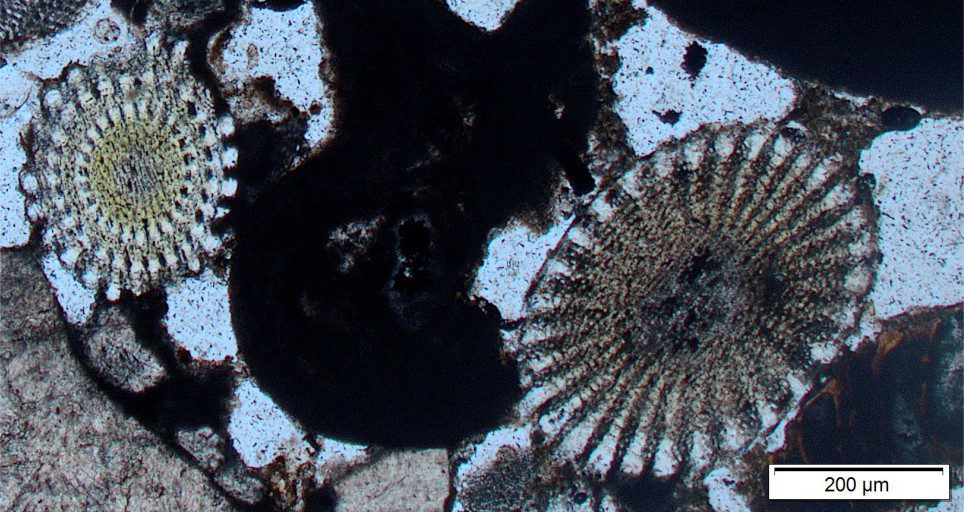
Modern Scleractinian corals are composed of aragonite fibers or needles organized into radiating clusters, or spherulites. Extinct groups such as Rugose and Tabulate corals consist of low Mg calcite fibers, but these may have recrystallized from high Mg calcite or aragonite. In thin section, the fibrous clusters plus the overall coral structure that includes the radiating septa (solid walls separating the cavities) are useful identifiers.
Modern bryozoans consist of high Mg calcite, aragonite, or both as microscopic and submicroscopic crystals. In thin section fragments of bryozoans are best recognized by their fenestrate structure – a regular arrangement of chambers, usually in pairs, that housed each animal (bryozoans are colonial structures).
Foraminifera are mostly calcitic, although some groups like Globigerina and related families are aragonitic. Like the other phyla, foraminifera wall structures are variable – common types are fibrous (normal to the test wall), granular, and microgranular or micrite-like.
Calcareous algae are another equally diverse group that are important limestone contributors. Common encrusting forms like Coralline algae are mostly high Mg calcite where individual crystals are submicroscopic that collectively form intricate arcuate or wavy layers. One common species, Lithothamnion, commonly encrusts pebbles and cobbles and typically is found along high energy rocky coasts.
Calcareous green algae such as Halimeda and Penicillus produce aragonite needles. Across the shallow sea floor (within the photic zone) carpets of green algae produce large volumes of aragonitic lime mud, or micrite – more on this in the companion Lime mud post.
Planktonic algae such as Coccoliths are composed of low Mg calcite. They too are important contributors to lime mud – but you will need a scanning electron microscope to see them.
links to other posts in this series
Bivalve shell morphology for sedimentologists
Gastropod shell morphology for sedimentologists
Cephalopod morphology for sedimentologists
Mineralogy of carbonates; non-skeletal grains
Mineralogy of carbonates; lime mud
Mineralogy of carbonates; classification
